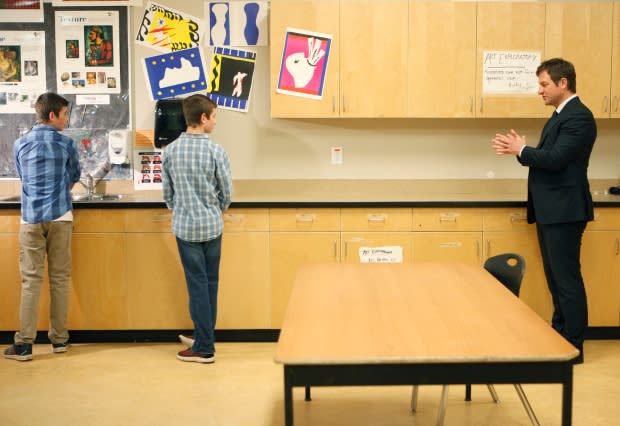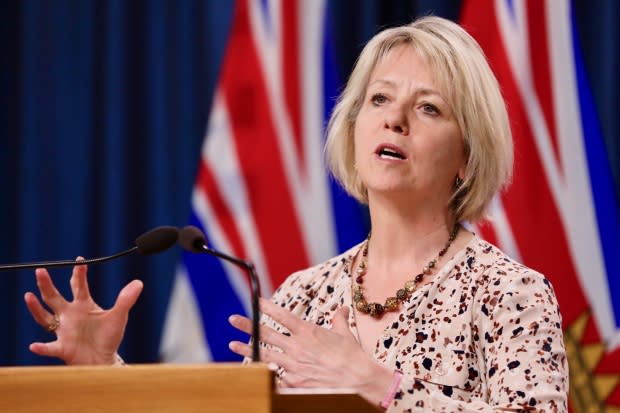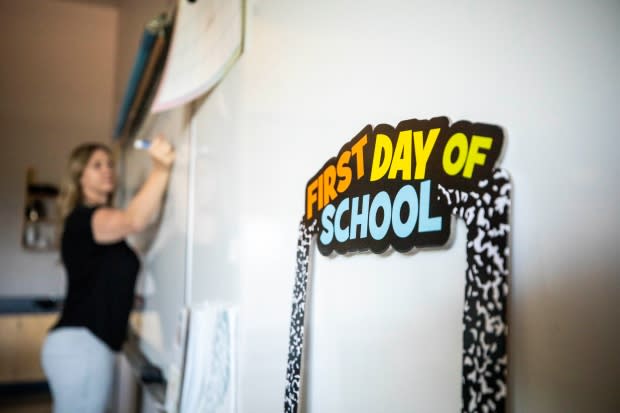A very different classroom: B.C. schools seek new normal as school year starts
It's the first week of school for B.C. students, but the classroom they walk into will be vastly different from the classroom they walked out of when schools closed in March.
Instead of crowded assemblies, casually swapped lunch snacks, carpooling and lapsing into hugs on the bleachers, school in the midst of the coronavirus pandemic will include frequent hand-washing, increased spacing from teachers and classmates, staggered start times, learning cohorts, and an adjusted schedule that might compress a year-long subject into a mere 10 weeks.
"People are thinking of the school that they left in March. It is different now," Provincial Health Officer Dr. Bonnie Henry said in August in an attempt to assuage fears.
"Yes, you can make a classroom safe."

Health officials announced the first case of the novel coronavirus in the province on January 28. It was unclear then how the virus would upend daily life. In the months to follow, a whole new system of unprecedented measures — the shutdown of the border and non-essential travel, closure of restaurants, quarantine measures for travellers — were put in place to stop the spread of the respiratory illness as cases ticked upwards.
And school — the central institution for over half a million B.C. children and tens and thousands of teachers, educators and support workers — was no exception.
Across the country, in Ontario and Quebec, cases spiked after spring break as families returned from travels abroad, bringing the virus with them. The two provinces took the step of shutting down schools completely on March 12 and March 14, respectively. The closures were initially for two weeks, but schools would remain closed for the rest of the school year.

B.C. families waited anxiously to hear from officials whether or not schools would shut down, as the province's spring break was scheduled later than the eastern provinces.
On the Tuesday of spring break, March 17, Education Minister Rob Fleming announced that yes, B.C. would also take the unprecedented step of suspending school to stop the spread of COVID-19.
Officials started looking for online schooling options in the meantime to fill the gap.
"That was a very difficult decision to make," said Health Minister Adrian Dix months later. "It was a decision that had other consequences, health and otherwise."
One of the positive consequences was that the timing of B.C.'s spring break and subsequent school suspension was credited by Henry as one of the reasons that B.C. so effectively flattened the curve in early months.
But for some families and educators, what to do about school has been an uneasy and frustrating dilemma.
In April and May, the province's newly constructed online education system elicited mixed response. Parents struggled with having their kids at home all day, keeping them engaged in their learning as students fought off boredom, tedium and loneliness. Others had little access to the resources — internet, a computer — required for virtual school.
Then, in June, with COVID-19 cases low, the province introduced a voluntary return-to-school, one of the only provinces to do so after the March closures. Over 30 per cent of students returned, but many parents continued to keep their children home until the end of the school year.

In July, government announced its back-to-school plans, later bolstered by extra provincial and federal funding.
In-class instruction was the priority for the majority students across the province, and Henry explained that different "layers of protection" would be used to prevent COVID-19 transmission. She also emphasized that months of evidence suggested transmission among school-aged children was less likely.
Henry said the cost of keeping schools closed is too high.
"For many children in this province, being at school is where they get health care. It's a safe place for them. It's a place where they can get psychological support, where they might get a meal," said Henry.
But the proposed school roll-out received criticism — especially as cases started spiking in the province. Some parents and teachers called for mandatory mask policies and smaller class sizes to allow for physical distancing, others asked for more online options to transition students, and two parents even headed to court saying the back-to-school plan endangered the public.
Even teachers and educators who were not opposed to the reopening plan have expressed confusion and doubt at exactly how all the public health measures would work.

Still, they prepped their classrooms and opened up school facilities this week for their new arrivals, equally excited and apprehensive, bringing us to Sept. 10 and the start of the 2020-2021 school year.
It's not yet known exactly how many children will walk through the doors of their schools on Thursday, though Education Minister Rob Fleming has said districts are expecting 85 to 90 per cent of students to attend school in person.
Henry stressed Tuesday that reopening schools is a crucial test.
"If we do not put our priority as a community on getting children back into the school setting and getting their education, their learning, their social interactions back together, we will have long-term, generational downsides to that.''
With these high stakes, it's a test the province hopes to pass with flying colours.


